Digital Camera World Verdict
Our original review of the Sony A7 was enthusiastic but cautious. There weren’t many lenses and there were some handling quibbles, but it was an exciting new camera. Five years on, there are lots of new lenses and the handling has evolved but only a little, so – paradoxically – the A7 looks even better now than it did back then, and for one big reason. Price! This may not be the most modern or best-featured full frame camera any more, but at today’s prices, what you get for your money is just extraordinary. Let’s spell this out. The A7 is a well-made 24-megapixel full frame mirrorless camera that COSTS LESS than practically any current mid-range APS-C camera on the market.
Pros
- +
Extraordinary value
- +
Very good image quality
- +
Compact body
Cons
- -
No 4K video
- -
No in-body stabilisation
- -
Relatively low-spec screen and EVF
Why you can trust Digital Camera World
The Sony A7 was launched back in late 2013, as the world’s first compact system camera with a full-frame sensor. Sony launched the 36MP A7R at the same time, but that model is no longer widely available, where the Sony A7 most definitely is.
Update: The original Sony A7 is now getting quite hard to find new, but its place has now been taken by the Sony A7 II, which is steadily falling in price and is a better camera with in-body stabilization. Read our Sony A7 II review.
Sony has taken the bold step of keeping this original A7 model on sale (and in production, we’re told), even though there have been a slew of better and more advanced A7 models since then. We guess Sony thinks this is a way to get as many people as possible into the Sony system; from our point of view it means we can buy a camera that’s stood the test of time and still stacks up pretty well today, and at prices far lower than any of its rivals. It leads our list of the cheapest full frame cameras by a mile, and may well be even better value come Black Friday.
Despite being several steps back from the latest technical developments, we think the A7 is still one of the best Sony cameras, not to mention the best mirrorless cameras all round, and all because it's a solid, effective camera at an amazing price.
It is geared towards enthusiasts and experts, however, so despite its price it's not necessarily one of the best cameras for beginners. Having said that, it would be a perfect choice for students and hobbyists on a tight budget.
The Sony A7 is one of a number of cameras to watch on Black Friday. Along with the (also excellent) Sony A6000, we think it could pop up at some seriously low prices!
Read more: Sony A7 vs A7 II vs A7 III: How do they compare?
Specifications
Sony model number: ILCE-7
Sensor: 24.3MP full-frame, 35.8x23.9mm
Focal length conversion: 1x
Memory: SD/SDHC/SDXC
Viewfinder: EVF, 2.4m dots
Video resolution: Full HD (1,920 x 1,080)
ISO range: 100-25,600 (expandable down to 50)
Autofocus: Hybrid AF, 117-point phase-detection, 25-point contrast-detection
Max burst rate: 5fps or 2.5fps with AF
LCD: 3-inch tilting, 921,600 dots
Shutter speeds: 1/8,000-30sec plus B
Weight: 416g (body only)
Dimensions: 126.9 x 94.4 x 48.2mm
Power supply: NP-FW50 Li-ion battery
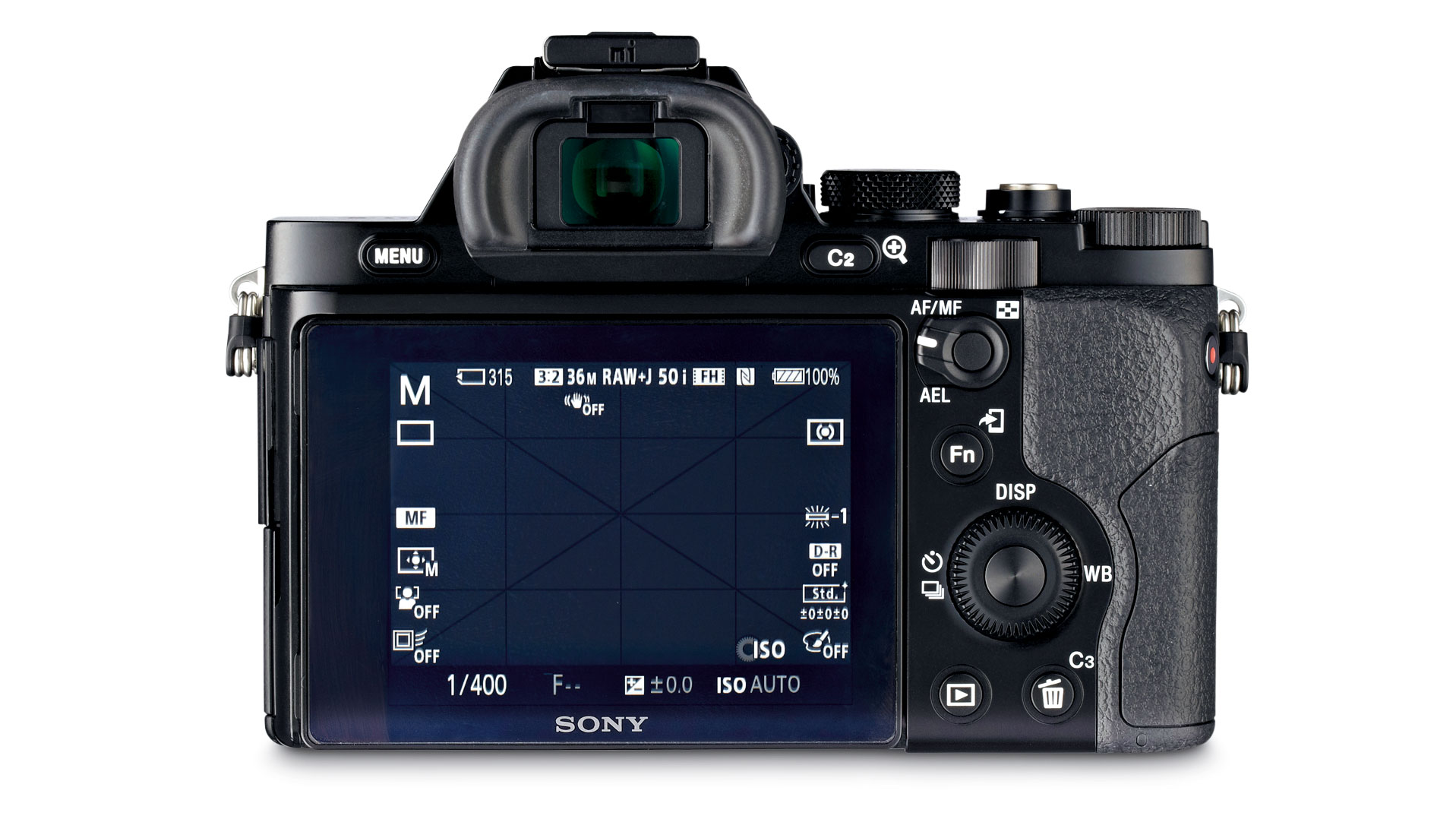
Key features
Some of the biggest advances in Sony cameras have been in the autofocus system, but even its first full frame mirrorless A7 has a hybrid phase/contrast-detection autofocus system. It doesn’t have the in-body SteadyShot INSIDE system introduced in the Mark II versions, but many Sony FE mount lenses are stabilised, and there are such things as tripods – and with the money you save on this camera, you can afford a decent one.
The resolution of the 24-megapixel sensor is pretty run of the mill by today’s standards, but it’s enough for most users and the larger photosites allow a good balance in all-round image quality.
There’s no 4K video, but the A7 was launched at a time when video in cameras was in its infancy and 4K had yet to appear in the mass market.
This isn’t a camera you’d buy for sports photography, either. It’s maximum 5fps continuous shooting speed is pedestrian enough, but if you want continuous AF, it drops to 2.5fps.
There’s a single SD/SDHC/SDXC card slot, and a modest-sized 3-inch tilting screen on the back. It’s not touch-sensitive and it can’t flip round for front-facing selfies or vlogging. The electronic viewfinder has a resolution of 2.4 million dots, which is not as high as some today, but not bad nonetheless.
Beyond that, there’s not much to say about the A7, which is a basic but effective camera for enthusiasts and experts. You can buy it body-only, with a Sony 28-70mm kit lens (effective, but don’t expect too much) or, at some retailers, with a 50mm f/1.8 prime lens. We’d recommend the Sony 28-70mm f/3.5-5.6 kit lens if you’re a first time Sony full frame camera buyer – it doesn’t add much to the price, it will get you started straight away and you can always buy better lenses later.
An adaptor for Sony’s A-mount lenses is available separately, so it’s easy enough to do a ‘sidegrade’ if you have a Sony Alpha SLT camera system that you want to swap out of.
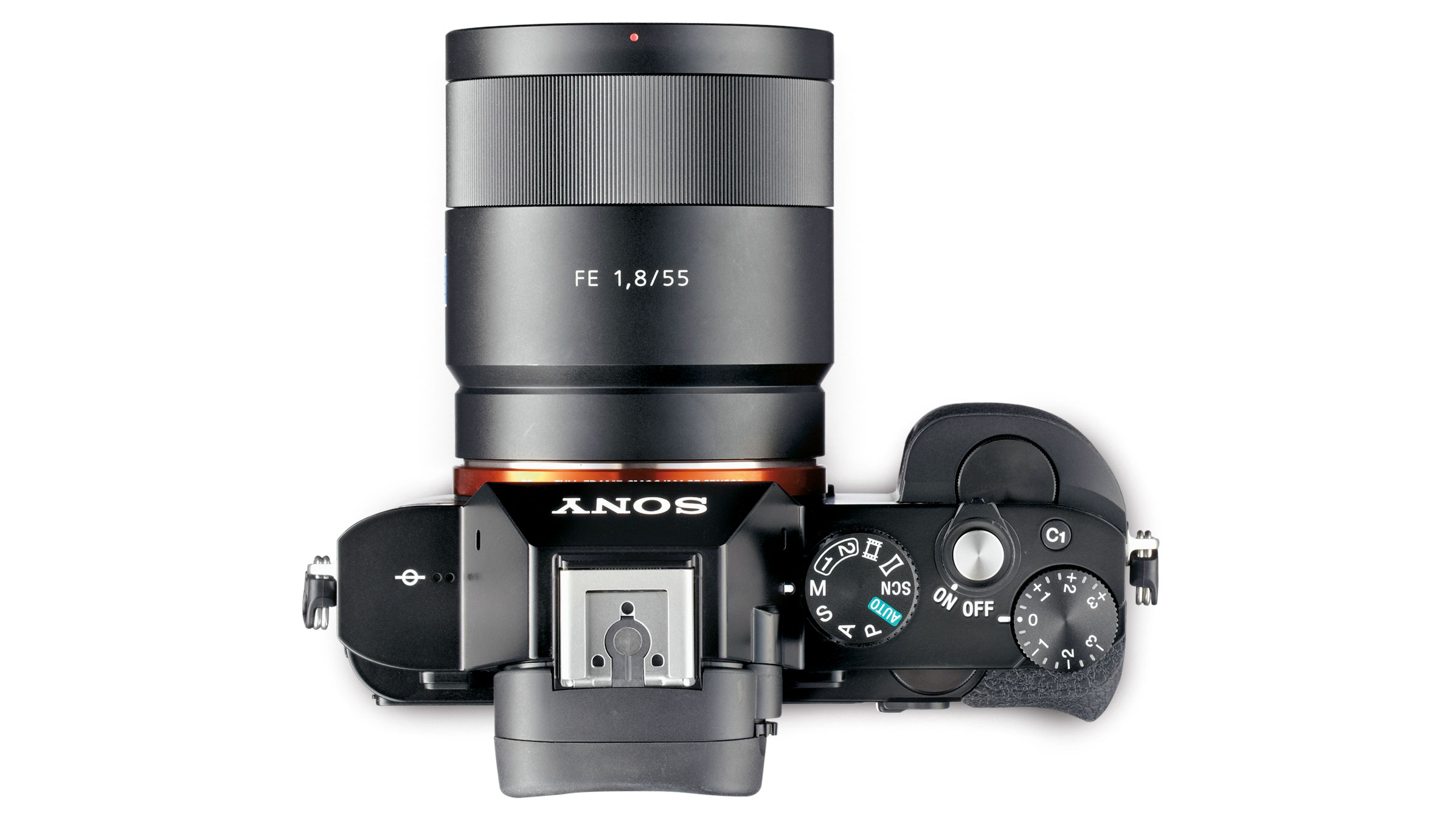
Build and handling
The A7 is obviously larger than Sony’s APS-C A6000 series cameras but for a full frame camera its small size is striking.
Even so, there’s a reasonably chunky grip which makes the body comfortable to hold for long periods of time. The design of the camera is a little boxy, which will be appreciated by some, but perhaps not by others. While it doesn’t have the retro gorgeousness of a Fujifilm model, there’s a certain simplistic appeal.
There’s a satisfying number of dials and buttons on the camera, which will be appreciated by the enthusiasts that the camera is aiming itself at. The majority of the buttons are grouped on the right, making them easy to reach with the thumb.
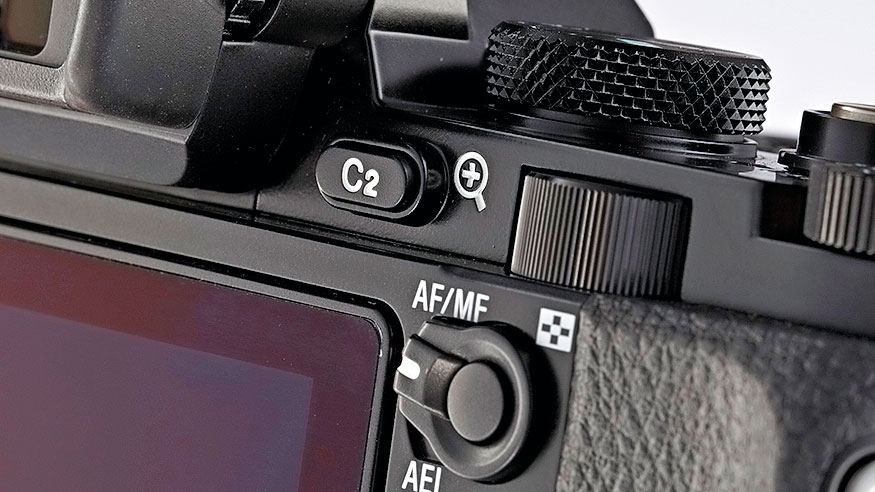
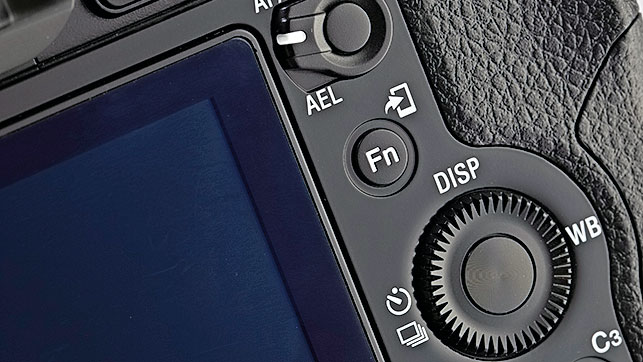
On top of the camera is a mode dial for switching between the various exposure modes on offer, including aperture priority and shutter priority. There’s also space here for up to two groups of customisable settings – useful if you often find yourself shooting in a particular type of condition, such as low light.
Just above the handgrip is a scrolling dial, which can be used for making changes to settings such as aperture or shutter speed, depending on the mode you’re shooting in. On the back of the camera where your thumb would naturally sit is a second scrolling dial, which can also be used to change these settings. If you’re shooting in fully manual mode, you use the front dial for aperture, and the rear one for shutter speed.
One of the best things about Sony cameras is the amount of customisation on offer. The A7 is no different in this respect, with three buttons labelled as ‘C’ for customisable. It doesn’t stop there, though: you can also change the function of almost every other button on the camera if you like. A quick menu, reached by tapping the function button and useful for accessing commonly used settings, is also fully customisable to the way you like to work.
If you don’t like customising your cameras, this could prove annoying. The Sony A7 does not offer the separate, dedicated settings buttons on its body that you may be used to from other cameras. There’s a lot more menu navigation and function assignment here.
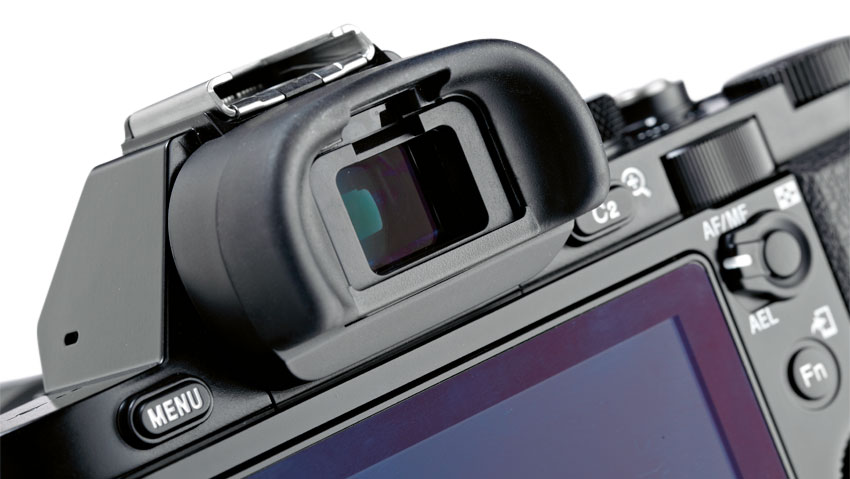
Lab tests
We have compared our lab test results for the Sony A7 with those of three key rivals you can buy today. One of these is the Canon EOS RP, Canon's relatively new 26MP full frame mirrorless camera – it's more expensive than the A7, but still pretty affordable. We also picked the Nikon D750, which is now Nikon's entry-level full frame DSLR, and available at pretty competitive prices. Like the Sony A7, it's benefitted from a long production run and continually falling prices. Our final A7 rival comes from its own stable. The A7 Mark II was its replacement, bringing improved image processing, in-body stabilisation and more. The A7 Mark II is still available, and while it's more expensive than the original A7, it's benefitted from the same kind of deliberate discounting, and is well worth considering as a slightly more expensive alternative.
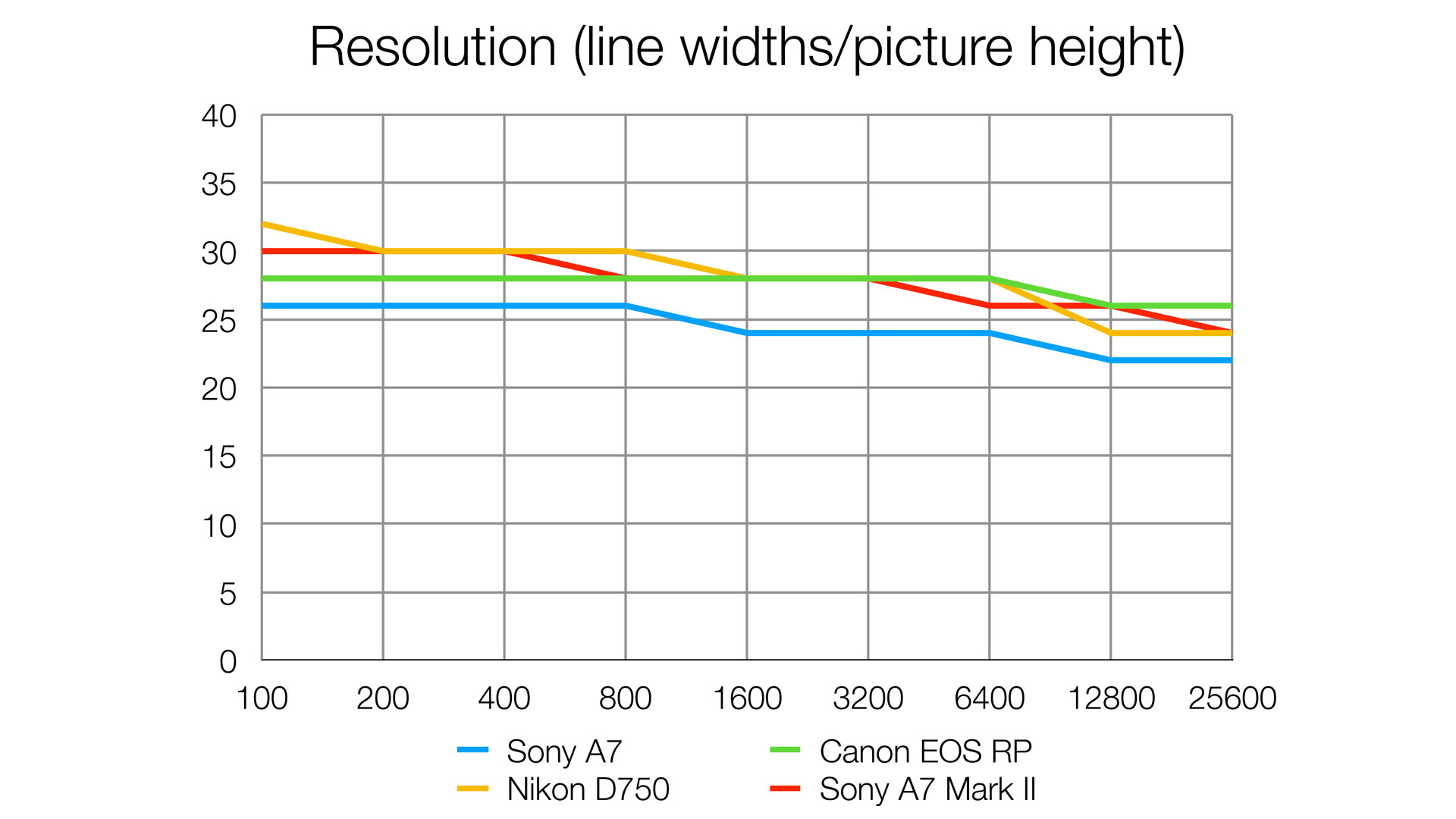
Resolution
The Nikon D750 and Sony A7 Mark II are slightly ahead here, with the 26MP EOS RP trailing slightly (surprisingly) and the Sony A7 a little further behind. The results from the A7 are still very good, but it appears the improvements in the Sony A7 Mark II have made a small but noticeable difference to the image quality here and elsewhere.
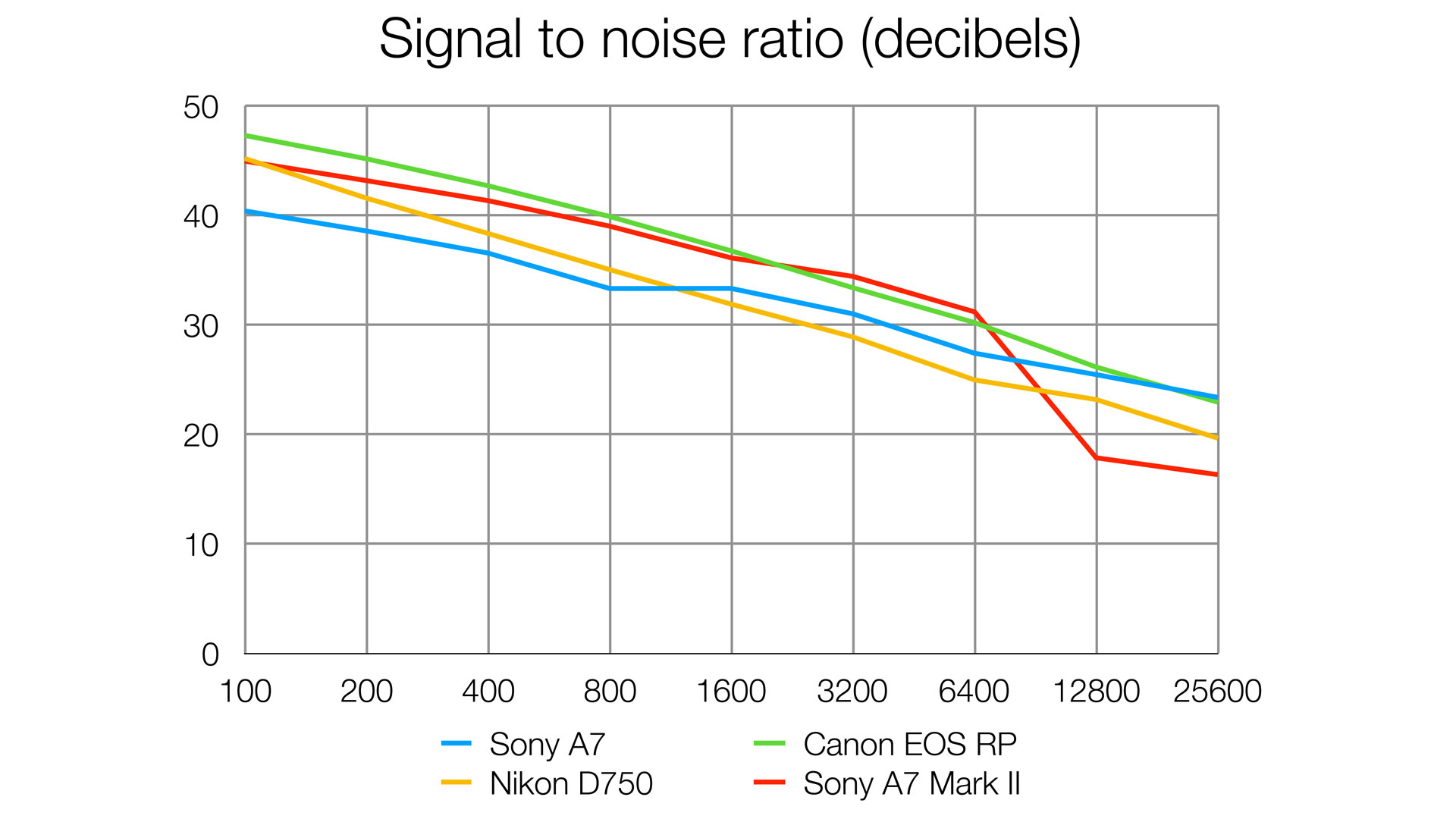
Signal to noise ratio
Noise control is one area where we do see constant improvements over time, so it's no surprise to see the Sony A7 and the Nikon D750 (itself now five years old) trailing the newer Sony A7 Mark II and Canon EOS RP. Having said that, the A7 Mark II goes all the way back to 2014, and still stacks up very well against the much newer Canon.
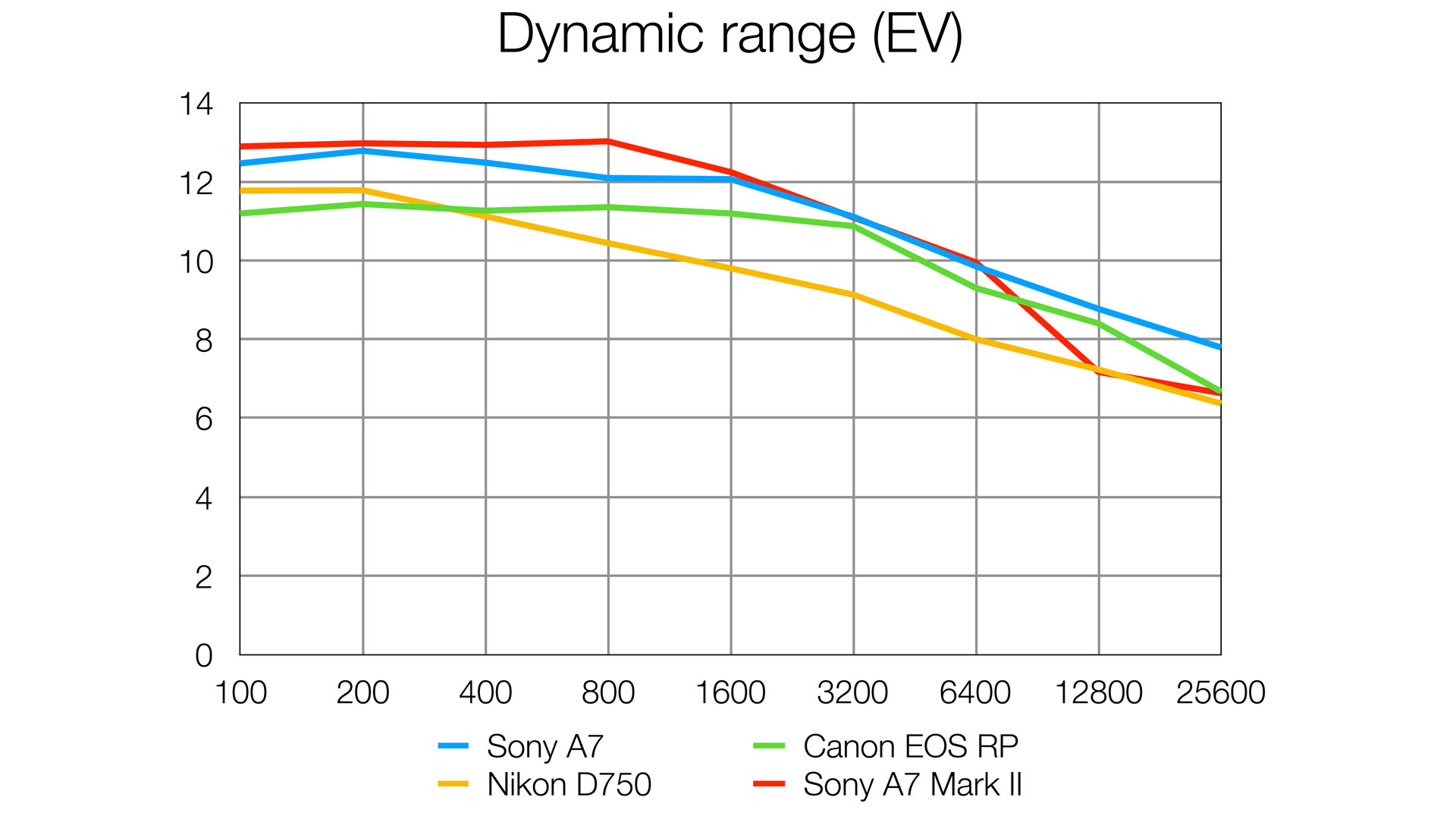
Dynamic range
Both the original Sony A7 and the later A7 Mark II score very well for dynamic range, beating the far newer Canon EOS RP and also showing the Nikon D750 a clean pair of heels. Even now, the Sony A7's results are good, and the A7 Mark II's are even better.
Performance
The A7 represented a genuine step forward in mirrorless technology when it was launched. Its tech looks pretty dated compared to what’s come along since, of course, but its easy to get caught up in camera spec wars and assume that every new development is important or even necessary. The fact is, the A7’s image quality stands the test of time perfectly well.
Colours are bright and punchy without displaying too much saturation. You can of course use Sony’s Creative Styles to alter colours in-camera, which is particularly useful for black-and-white shots or if you want to up the vibrance for any reason. Using Creative Styles means you can shoot in raw format and keep a ‘clean’ version of the image for working on later. Conversely, shooting with Picture Effects, a range of digital filters, is available in JPEG only, which is a shame.
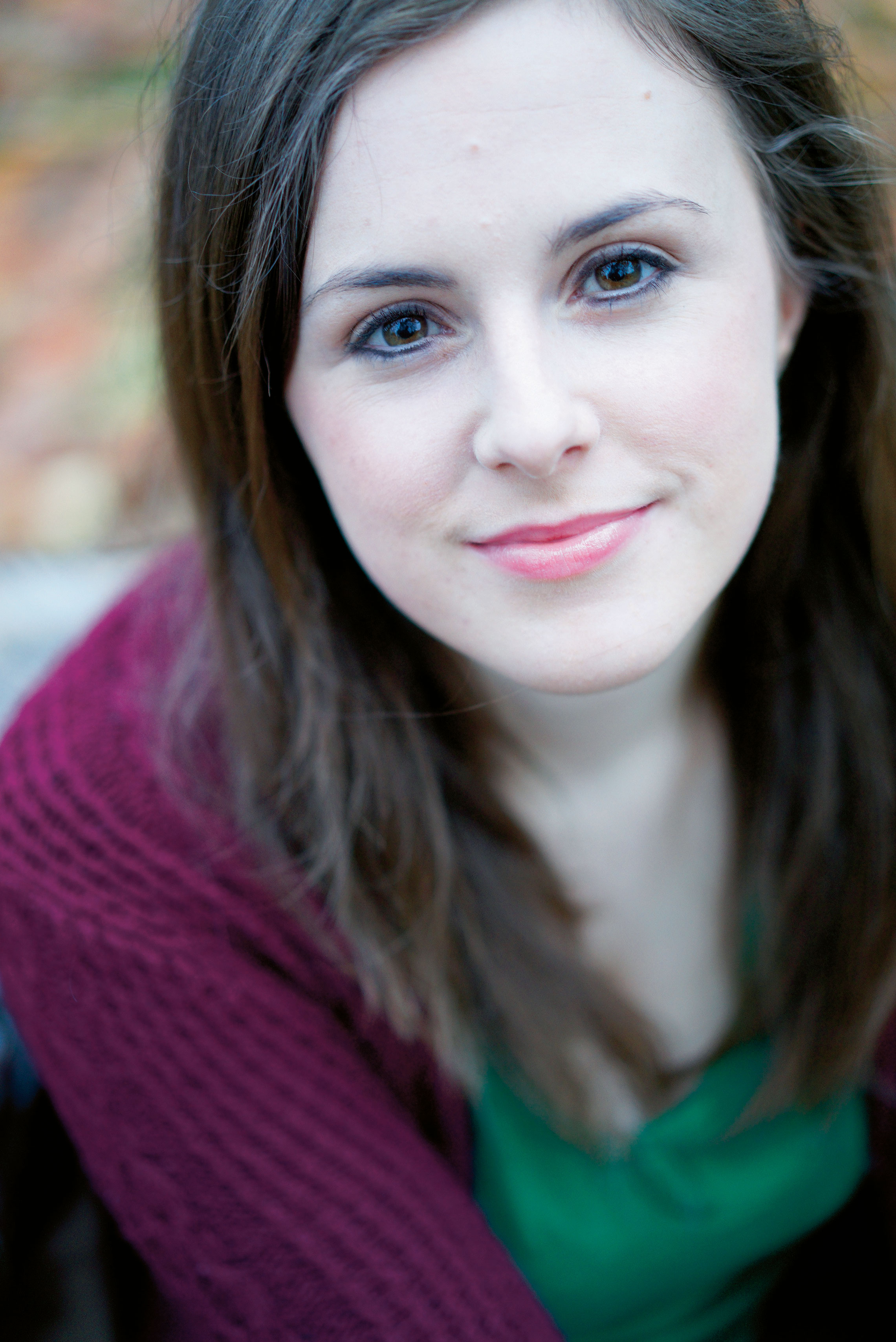
Generally speaking, the A7’s metering system does a good job when left on Multi (all-purpose). You may need to dial in some exposure compensation when shooting in areas of high contrast, or if shooting somewhere very dark. Similarly, the automatic white balance option copes reasonably well in most situations, albeit erring towards incorrect colour casts when shooting under artificial lights. In these cases, it makes sense to switch to a more appropriate white balance setting.
The A7 can be bought as a package with the 28-70mm f/3.5-5.6 FE lens. While it’s a decent enough optic to start with, it’s not the lens that either of the full-frame sensors deserves.
The amount of detail resolved by the A7 is impressive, though our lab tests reveal that newer cameras can improve a little on its sharpness. We tried the 35mm f/2.8 Zeiss FE lens, which really showcases what this camera is capable of.
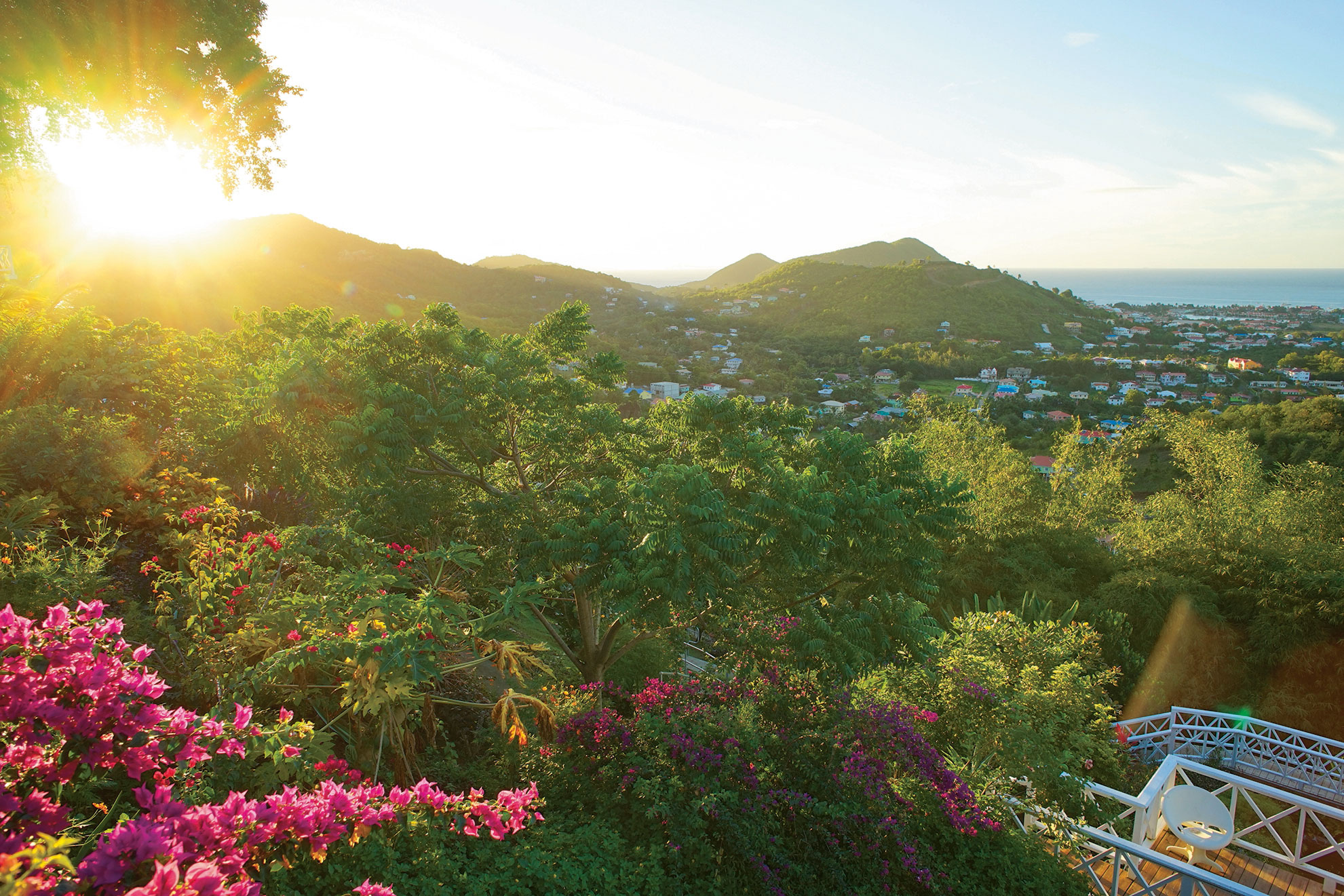
Sony claimed at the time that the A7 boasts faster autofocusing speeds than other full-frame cameras of that era, such as the Nikon D610 and the Canon 6D. While that is possibly true (there doesn’t seem to be much in it) in good light, as light levels drop the autofocus hunts a lot more, and on occasion brings up a false positive.
Image noise doesn’t really start to show until around ISO 1,600, while it doesn’t become problematic until ISO 6,400 – and even then only when you’re examining images at 100% to look for issues. Images are more than acceptable when shared or printed at A4 or smaller sizes.
The biggest problem is battery life. It’s pretty much a given that you will need to purchase at least one additional battery if you intend to use the camera for more than, say, half a day’s shooting at a time.
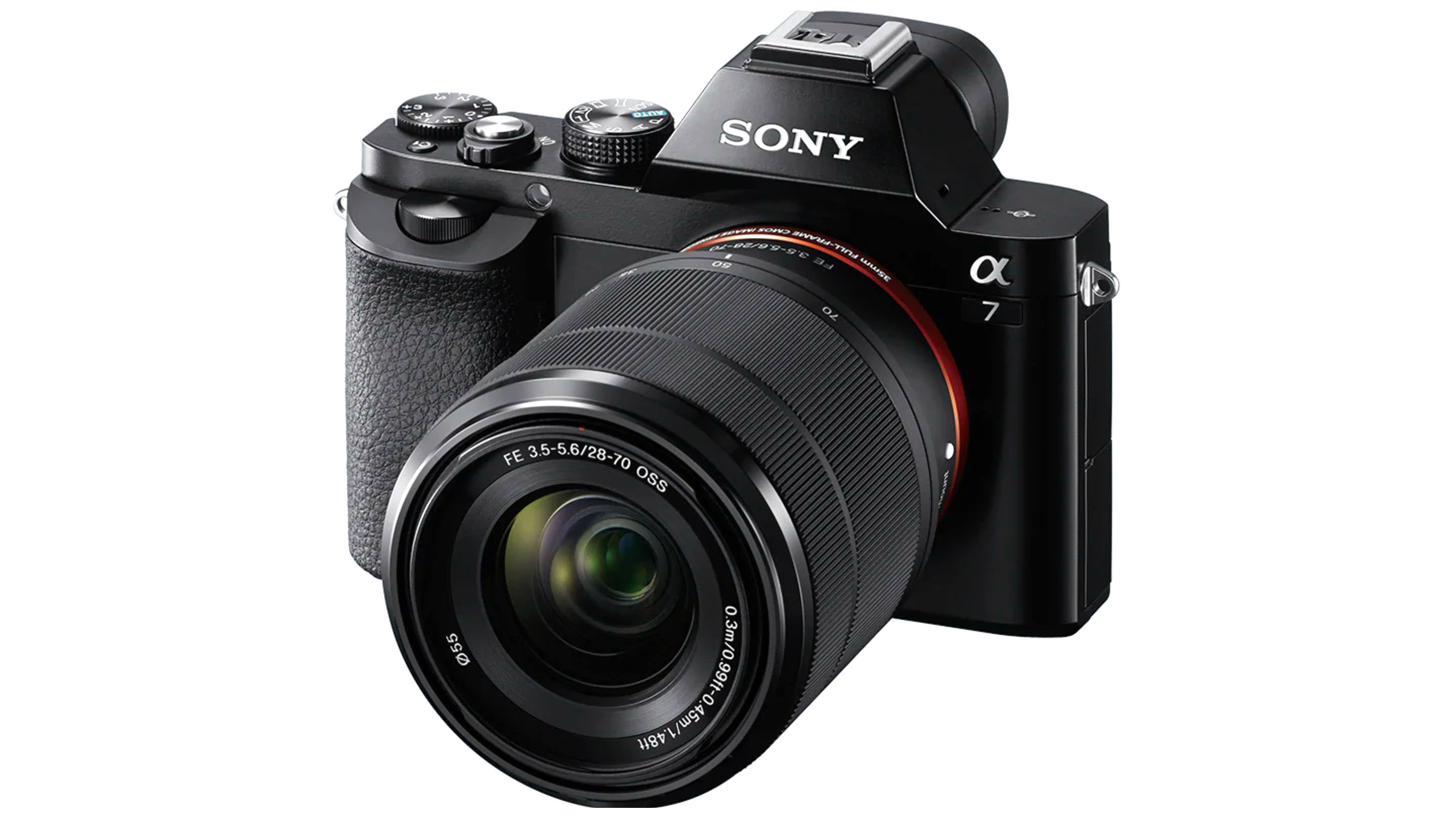
Verdict
The Sony A7 kicked off Sony’s challenge in the full frame camera market, previously dominated by DSLRs. You only have to look at today’s very different camera market to see the impact it has had. All this has happened in a comparatively short time, so although the A7 is the first and oldest camera in this series, it’s tech is still only five years old – and Sony was pretty good at making cameras and sensors then, as it is now.
The A7’s image quality is top-class within the limits of its 24-megapixel resolution. Colours are beautifully vibrant, while the scope to customise colour output in camera is very much appreciated. It’s also clear that Sony has thought about how photographers like to work: the breadth of customisation options is fantastic.
The A7 isn’t without its flaws, some of them major. Battery life is poor, to say the least: if you’re looking to spend a day with the camera, it simply won’t last that long. That makes additional batteries pretty much an essential purchase. It’s also a shame that Sony has chosen to omit a touchscreen. When setting the AF point is as tricky as it is here, it would make things a lot simpler and quicker.
There are other things about this camera we could find fault with, but not at this price! That’s the key thing about the A7 – it might not have been perfect, even, when it was launched, but the way it still stacks up today, and the prices you can get it for, mean that none of these honestly matter. What it can't do is pretty obvious. What it can do, at this price, is extraordinary.
Read more:
• These are the best mirrorless cameras right now
• We list the cheapest full frame cameras you can buy
• The Sony A7 is STILL one of the best Sony cameras
• The best Sony lenses

Rod is an independent photography journalist and editor, and a long-standing Digital Camera World contributor, having previously worked as DCW's Group Reviews editor. Before that he has been technique editor on N-Photo, Head of Testing for the photography division and Camera Channel editor on TechRadar, as well as contributing to many other publications. He has been writing about photography technique, photo editing and digital cameras since they first appeared, and before that began his career writing about film photography. He has used and reviewed practically every interchangeable lens camera launched in the past 20 years, from entry-level DSLRs to medium format cameras, together with lenses, tripods, gimbals, light meters, camera bags and more. Rod has his own camera gear blog at fotovolo.com but also writes about photo-editing applications and techniques at lifeafterphotoshop.com


